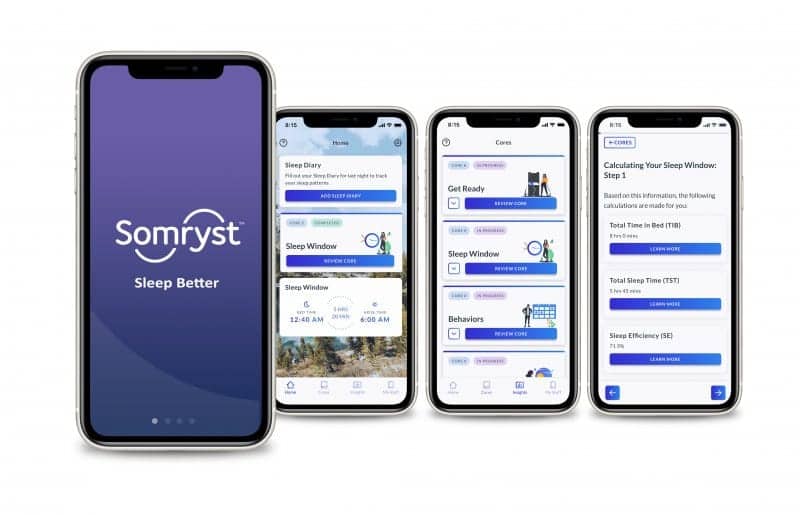An international peer-reviewed journal has published new results from a health economic analysis of real-world data to evaluate healthcare resource utilization, associated costs, and insomnia severity for Somryst, a US Food and Drug Administration-authorized prescription digital therapeutic for the treatment of chronic insomnia.
Results showed clinically meaningful reductions in health-related services and costs in the 24 months after initiation of Somryst (previously known as SHUTi) compared to 24 months prior. Further, clinically meaningful reductions in Insomnia Severity Index (ISI) were also found at end-of-treatment at nine weeks compared to baseline. The retrospective analysis was published in the ClinicoEconomics and Outcomes Research.
“These real-world data underscore the potential clinical utility and durable economic benefit of a prescription digital therapeutic like Somryst among people with chronic insomnia,” says Yuri Maricich, MD, chief medical officer of Pear Therapeutics, marketers of Somryst, in a release. “In the last 24 months, lack of sleep has been exacerbated by the ongoing COVID-19 pandemic and can greatly impact not only day-to-day activities, but also overall quality of life and long-term health. Now, it’s especially important to examine digitally delivered treatment options that can address the underlying issues of chronic insomnia.”
The analysis evaluated real-world data of 248 adult patients with chronic insomnia treated with Somryst over 24-months compared to the 24 months months prior to treatment and found:
- Reductions in health-related services including:
- Emergency department visits (53%; IRR: 0.47; 95% CI 0.27, 0.82; P=0.008).
- Hospitalizations (21%; IRR: 0.79; 95% CI 0.46, 1.352; P=0.3887).
- Hospital outpatient visits (13%; IRR: 0.87; 95% CI 0.66, 1.14; P=0.315).
- Number of patients treated with sleep aid medications (18.5%).
- An estimated $2,059 reduction in per-patient costs.
By end of treatment at nine weeks compared to baseline at treatment initiation, results found:
- A 37.2% reduction in mean ISI score (19.1 at baseline and 12.0 at nine weeks).
- 9% of treated participants achieved ISI responder status (ISI score improved by >7).
- 6% of treated participants achieved insomnia remission (ISI score <8) (0 at baseline and 66 at nine weeks).


